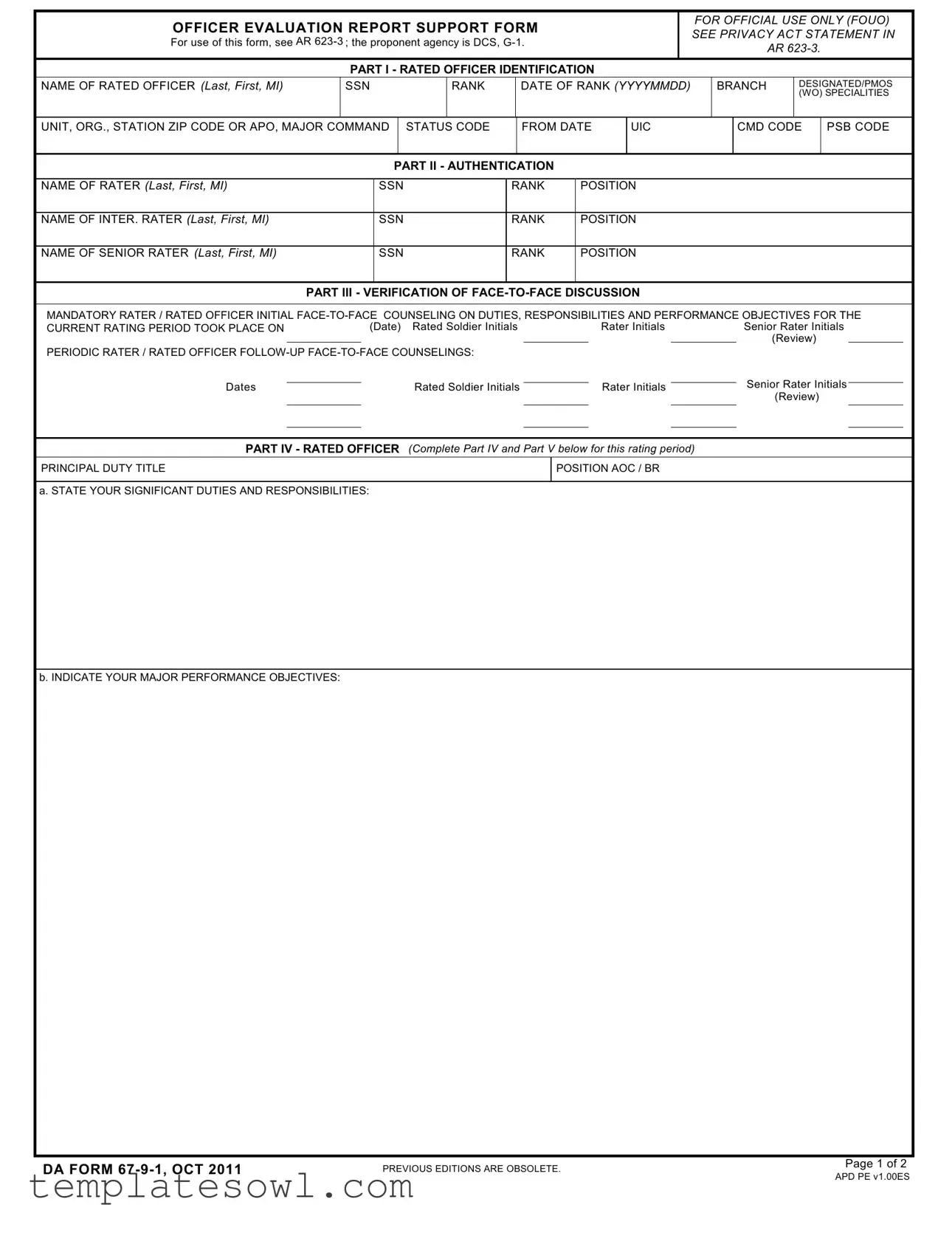What is the purpose of the DA 67-9-1 form?
The DA 67-9-1 form, or Officer Evaluation Report Support Form, is used by rated officers to outline their duties, responsibilities, and objectives for a specific rating period. This form helps to facilitate meaningful discussions between the officer and their raters about performance expectations and future career development.
Who fills out the DA 67-9-1 form?
The rated officer is primarily responsible for completing the DA 67-9-1 form. However, the rater, intermediate rater, and senior rater also play critical roles in the evaluation process by providing feedback and input during face-to-face discussions, which must be documented on the form.
What sections are included in the DA 67-9-1 form?
The form is divided into several parts: identification of the rated officer, authentication (which includes the names and ranks of the rater and senior rater), verification of counseling discussions, a detailed outline of the officer's duties and performance objectives, and a section for the officer to list significant contributions and future assignments. Each part is vital for a comprehensive evaluation.
What should the rated officer include in the 'significant duties and responsibilities' section?
In this section, the rated officer should clearly outline their main duties and responsibilities within their current position. This could include specific tasks, leadership roles, and any projects or initiatives they are overseeing. Being precise and comprehensive helps to provide a clear picture of the officer's role and contributions.
How often should face-to-face counseling take place?
Face-to-face counseling between the rater and rated officer is mandatory at the beginning of each rating period. Additionally, periodic follow-up counseling sessions are encouraged to ensure that the officer remains aligned with established goals and responsibilities. Documenting these discussions is crucial for maintaining accountability.
Why is it important to list professional skills and areas of expertise?
Listing significant professional skills and areas of expertise helps both the officer and their leadership understand the unique value the individual brings to the Army. This information can influence future assignments, project selection, and training opportunities, leading to better career advancement prospects.
Can the rated officer request to change their branch or career field?
Yes, the DA 67-9-1 form includes a section where the officer can express their preference for a different branch or career field, should they be unable to serve in their current one. This option can provide the officer with greater career satisfaction and alignment with their professional goals.
What is the importance of listing future assignments?
By identifying three future assignments for which they feel best suited, officers can communicate their career aspirations to their raters. This can help leadership consider the officer’s interests and strengths when making decisions about assignments, which is particularly beneficial for career development.
What happens if the DA 67-9-1 form is not properly completed?
If the form is not completed accurately or on time, it can negatively impact the officer's evaluation. Incomplete or poorly documented forms may lead to misunderstandings about the officer's performance and contributions, which could adversely affect promotions and career progression.
Where can I obtain the DA 67-9-1 form?
The DA 67-9-1 form can be accessed through official Army websites or through unit administrative channels. It is advisable to review the most current version to ensure compliance with the latest regulations and policies.


